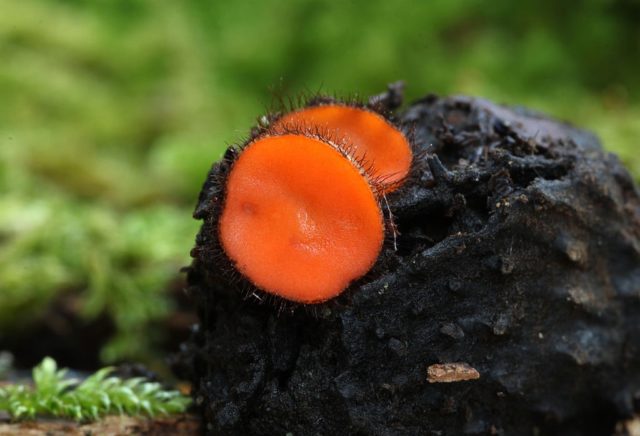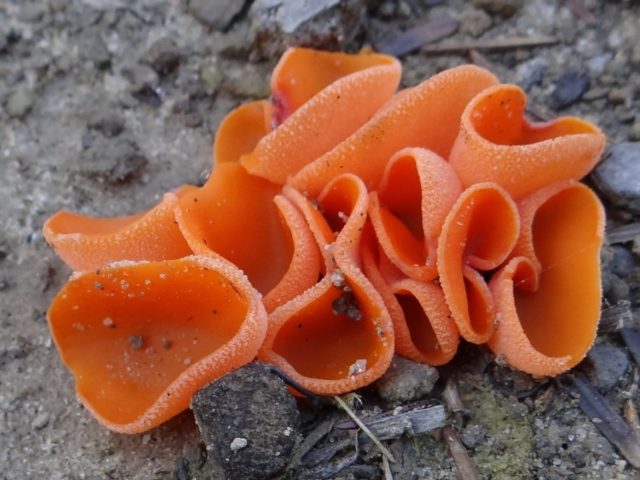Content
Thyroid scutellin (Latin Scutellínia scutellata) or saucer is a small mushroom with a rather unusual shape and bright color. It does not belong to the number of poisonous varieties, however, its nutritional value is low, which is why the species is not of particular interest to mushroom pickers.
What does scutellinia thyroid look like?
In young specimens, the fruiting body is spherical. As it matures, the cap opens and takes on a cupped shape, and then completely becomes almost flat. Its surface is smooth, painted in a rich orange color, which sometimes turns into light brown tones. A distinctive feature of the species are stiff bristles that run in a thin line along the edge of the cap.
The pulp is quite brittle, inexpressive in taste. Its color is reddish-orange.
There is no pronounced leg - it is a sedentary variety.
Where and how it grows
Preferred growth sites are dead wood, which means rotten stumps, fallen and decaying trunks, etc. Mushrooms rarely grow alone, most often small dense groups can be found.
Is the mushroom edible or not
Scutellinia thyroid is not an edible variety due to its small size. Its nutritional value is also low.
Doubles and their differences
Aleuria orange (lat. Aleuria aurantia) is the most common twin of this species. In the common people, the mushroom is also called orange petsitsa or pink-red saucer. It is represented by a fairly compact fruiting body in the form of a bowl or saucer, the size of which does not exceed 4 cm in diameter. Sometimes the cap looks like an auricle.
A distinctive feature of a double is the presence of curled edges. In addition, there are no rigid bristles at the ends.
They also grow in different places. While scutellinia thyroid settles on dead trees, orange aleuria prefers forest edges, lawns, roadsides and forest paths. The twin bears fruit from July to September.
Despite the fact that orange aleuria is edible (conditionally edible), it is not popular. This is explained by the low value of the species and insignificant size, as is the case with many representatives of this family.
Conclusion
Scutellinia thyroid is a small mushroom that is not of particular interest from a culinary point of view. Its taste is inexpressive, as is the smell, and the size of the fruit bodies is too small.
For more information on how thyroid scutellin looks like, see the video below:










